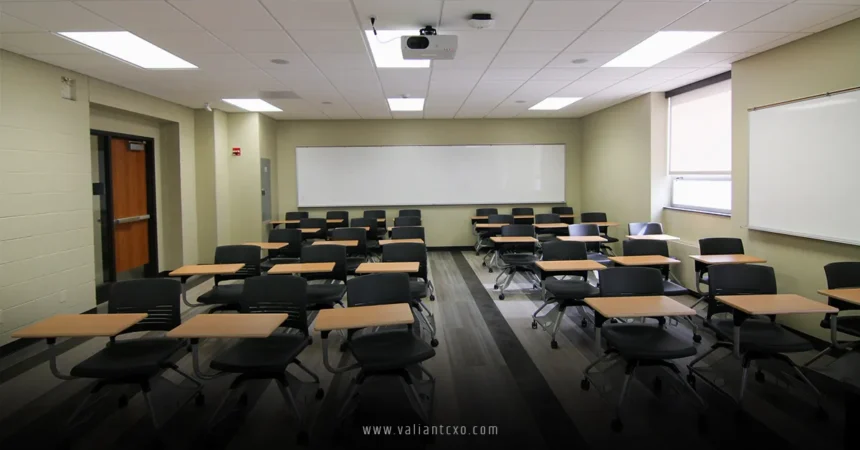Classroom environments are more than just four walls and a chalkboard—they’re the heartbeat of learning, where ideas spark, minds grow, and futures take shape. Whether it’s a bustling elementary school classroom, a high-tech university lecture hall, or a virtual classroom connecting students across the globe, these spaces are evolving to meet the needs of modern learners. But what makes a classroom truly effective? How do these spaces influence how we learn, connect, and thrive? In this article, we’ll dive deep into the world of classrooms, exploring their history, modern innovations, and the strategies that make them vibrant hubs of education. Let’s unpack the magic of the classroom and discover how it’s shaping the future of learning.
The Evolution of the Classroom: From Blackboards to Digital Boards
A Glimpse into the Past
Picture a classroom from a century ago: rows of wooden desks, a stern teacher wielding a chalkboard, and students scribbling furiously with quills or pencils. The classroom of yesteryear was rigid, often more about discipline than creativity. Learning was a one-way street—teachers lectured, students listened. But even then, the classroom was a sacred space, a place where knowledge was passed down like a cherished heirloom.
Fast forward to the 20th century, and the classroom began to shift. Progressive educators like John Dewey championed hands-on learning, urging classrooms to become spaces for exploration rather than rote memorization. Desks started moving into circles, group projects emerged, and the classroom became a place for collaboration. This shift laid the groundwork for the dynamic, student-centered classrooms we see today.
The Modern Classroom: Technology Takes Center Stage
Today’s classroom is a far cry from its historical roots. Walk into a modern classroom, and you might find interactive whiteboards, tablets, and even virtual reality headsets. Technology has transformed the classroom into a hub of innovation. Students aren’t just passive listeners—they’re active participants, engaging with digital tools to solve problems, create projects, and connect with peers worldwide.
For example, platforms like Google Classroom and Microsoft Teams have redefined how teachers manage assignments and foster collaboration. These tools allow students to submit work, participate in discussions, and access resources from anywhere, making the classroom a 24/7 learning environment. But it’s not just about tech—modern classrooms prioritize flexibility, with movable furniture and open layouts that encourage group work and creativity.
Designing the Ideal Classroom: What Works?
Physical Layout: More Than Just Desks
Have you ever walked into a classroom and felt instantly inspired—or, conversely, stifled? The physical layout of a classroom plays a massive role in how students learn. Traditional rows of desks are giving way to flexible seating arrangements—think bean bags, standing desks, or collaborative tables. These setups encourage movement, which studies show can boost focus and engagement.
Natural light, vibrant colors, and comfortable seating also make a difference. A classroom that feels welcoming can reduce anxiety and make students eager to learn. For instance, a study from the University of Salford found that well-designed classrooms can improve academic performance by up to 16%. That’s huge! So, when designing a classroom, think beyond functionality—create a space that feels like a second home.
Incorporating Technology Without Losing the Human Touch
Technology is a game-changer, but it’s not the whole story. A classroom overloaded with gadgets can feel cold and impersonal. The best classrooms strike a balance, using tech to enhance learning while keeping human connection at the core. For example, teachers might use interactive apps like Kahoot! to make lessons fun, but they also prioritize discussions and hands-on activities to build relationships.
Inclusivity in the Classroom
An effective classroom welcomes everyone. This means accommodating diverse learning needs—whether it’s providing visual aids for students with dyslexia, offering quiet spaces for neurodivergent learners, or ensuring cultural representation in teaching materials. An inclusive classroom isn’t just a buzzword; it’s a commitment to making every student feel valued and capable.
The Role of Teachers in the Classroom
Beyond the Lesson Plan
Teachers are the soul of the classroom. They’re not just delivering content—they’re mentors, motivators, and sometimes even mediators. A great teacher knows how to adapt the classroom environment to suit their students’ needs. They might rearrange desks for a group project, use storytelling to make history come alive, or incorporate mindfulness exercises to help students focus.
Building a Community
Ever notice how the best classrooms feel like families? That’s no accident. Teachers who foster a sense of belonging create classrooms where students thrive. Simple strategies, like starting the day with a check-in or celebrating small wins, can transform a classroom into a tight-knit community. When students feel safe and supported, they’re more likely to take risks and engage deeply with their learning.
The Rise of the Virtual Classroom
Learning Without Borders
The classroom isn’t confined to physical spaces anymore. Virtual classrooms have exploded in popularity, especially since the pandemic showed us that learning can happen anywhere. Platforms like Zoom and Canvas have made it possible for students to join a classroom from across the globe, breaking down geographical barriers.
But virtual classrooms come with challenges. How do you keep students engaged when they’re staring at a screen? Teachers are getting creative—using breakout rooms for small-group discussions, incorporating gamified quizzes, and even hosting virtual field trips. The key is to make the virtual classroom feel as interactive and personal as a physical one.
Blended Learning: The Best of Both Worlds
Many schools now embrace blended learning, combining in-person and online elements. In a blended classroom, students might watch a lecture video at home and then use classroom time for discussions or hands-on projects. This approach maximizes flexibility and allows teachers to tailor the classroom experience to individual needs.
Challenges Facing Today’s Classrooms
Overcrowding and Resource Gaps
Not every classroom is a high-tech wonderland. Many schools, especially in underfunded areas, struggle with overcrowded classrooms and outdated resources. Imagine trying to teach 35 kids in a classroom designed for 20—it’s like herding cats while riding a unicycle. Addressing these challenges requires investment in infrastructure and teacher training to ensure every classroom is equipped for success.
Keeping Up with Technology
Technology moves fast, and classrooms can struggle to keep pace. Teachers need ongoing training to use new tools effectively, and schools need budgets to afford them. Without this, the classroom risks becoming a relic of the past, unable to prepare students for a tech-driven world.
Student Engagement in a Distracted Age
Let’s face it: today’s students have more distractions than ever. Smartphones, social media, and endless notifications compete for their attention. Creating a classroom that captures their interest is no small feat. Teachers are turning to active learning strategies—like project-based learning or real-world problem-solving—to make the classroom more engaging than a TikTok feed.
The Future of the Classroom: What’s Next?
Personalized Learning Through AI
The classroom of the future is all about personalization. Artificial intelligence is already making waves, with tools that adapt lessons to individual student needs. Imagine a classroom where every student works at their own pace, with AI providing tailored exercises and feedback. It’s like having a personal tutor for every kid.
Sustainability in the Classroom
Eco-conscious classrooms are on the rise. From using recycled materials to teaching sustainability, classrooms are becoming spaces where students learn to care for the planet. Some schools even incorporate outdoor classrooms, where nature itself becomes a teaching tool.
Global Collaboration
The classroom is going global. With tools like virtual reality and international exchange programs, students can collaborate with peers in other countries, gaining a broader perspective. This global classroom fosters cultural understanding and prepares students for a connected world.
Practical Tips for Creating an Effective Classroom
For Teachers
- Mix It Up: Vary your teaching methods—lectures, group work, and hands-on activities keep the classroom dynamic.
- Know Your Students: Take time to understand their interests and needs to make the classroom relevant to them.
- Embrace Tech (Wisely): Use tools like Edutopia’s resources to find tech that enhances learning without overwhelming it.
For Administrators
- Invest in Training: Equip teachers with the skills to manage modern classrooms.
- Prioritize Inclusivity: Ensure classrooms are designed for all learners, with resources like those from Understood.org.
- Update Infrastructure: Advocate for funding to create flexible, tech-ready classrooms.
For Parents
- Get Involved: Volunteer or communicate with teachers to support the classroom environment.
- Encourage Curiosity: Reinforce classroom learning by engaging your child in discussions at home.
- Explore Resources: Check out Khan Academy for free tools to supplement classroom education.
Conclusion: The Classroom as a Catalyst for Growth
The classroom is more than a place—it’s a catalyst for growth, creativity, and connection. From its humble beginnings to its tech-driven future, the classroom continues to evolve, adapting to the needs of students and society. By embracing flexibility, inclusivity, and innovation, we can ensure that every classroom is a space where learners thrive. So, whether you’re a teacher shaping young minds, a student navigating your education, or a parent supporting the journey, remember: the classroom is where possibilities come to life. Let’s keep pushing to make every classroom a launchpad for success.
FAQs About Classrooms
What makes a classroom effective for learning?
An effective classroom combines a welcoming environment, engaging teaching methods, and tools that cater to diverse needs. Flexible seating, technology, and a supportive teacher make all the difference.
How can technology enhance the classroom experience?
Technology, like interactive apps and virtual platforms, makes the classroom more dynamic by enabling personalized learning and global collaboration, but it should complement human interaction.
What are the benefits of a virtual classroom?
Virtual classrooms offer flexibility, accessibility, and the ability to connect students worldwide, making education more inclusive and adaptable to individual schedules.
How can parents support their child’s classroom success?
Parents can engage with teachers, encourage curiosity at home, and explore supplemental resources to reinforce what’s learned in the classroom.
What does the future hold for classrooms?
The future classroom will likely feature AI-driven personalization, sustainable practices, and global collaboration, creating spaces that are both innovative and inclusive.
Read Also:valiantcxo.com


